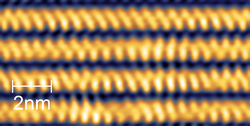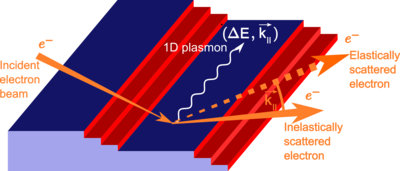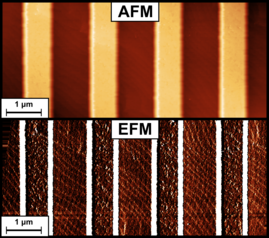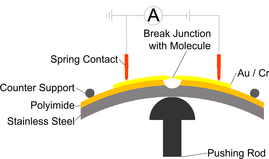Quasi one-dimensional atomic wires
Ideal one-dimensional (1D) electronic systems have peculiar properties, such as quantization of conductance, charge-density waves (CDWs), and Luttinger-liquid behavior, a variety of instabilities with a wealth of associated phase transitions. These are due to their reduced dimensionality and the concomitant high electronic correlations... more



Electronic transport in low-dimensional nanostructures
The electronic properties of low-dimensional systems are closely related to their geometric structure. Electron confinement is of high importance in one (1D) and two-dimensional (2D) structures leading to strong correlations between electrons and to significant deviations from Fermi liquid behavior, sometimes better described by a Luttinger liquid... more



Plasmon in low-dimensional structures
A prominent possiblity to couple energy transported by electromagnetic radiation into (conducting) matter is by generation of plasmons, which can happen for objects from zero to three dimensions. This rapidly growing interdisciplinary field of research is called plasmonics. One of the most attractive aspects of plasmonics is the ability to squeeze light into objects with sub-wavelength size thanks to the properties of surface plasmon polaritons (SPP)... more



Graphene and graphene nanostructures
Graphene, an atomically thin, two-dimensional sheet of carbon atoms arranged in a hexagonal honeycomb lattice exhibits unique electronic and structural properties and is one of the most intensively studied material systems nowadays. Its linear energy dispersion gives rise to extremely high electron mobilities, making graphene an ideal candidate for high performance electronic applications... more



Molecular electronics
The ultimate goal of molecular electronics is to use single molecules as a building blocks for future device structures. In order to follow this modular concept where the device functionality is defined by the electronic properties of the molecules detailed knowledge about the electronic interaction with their environment, e.g. metallic nano-contacts, is essential... more



Insulating thin films and their applications
Wide band gap insulators are ubiquitous in nature, mostly as crystalline minerals. Although in general chemically apparently inert, at least as perfect stoichiometric substances, their use as template materical in catalysis and their interplay with the catalytically active material is a matter of active research at present... more



